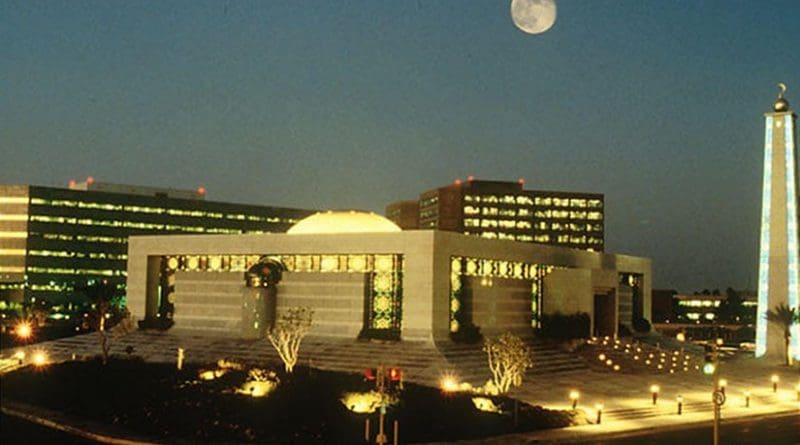Crude Calculation: Just How Much Oil Does Saudi Aramco Have In Reserve? – OpEd
By Arab News
By Frank Kane*
Now that the initial public offering of Saudi Aramco has been officially put back until 2019, the company can give preparations for what could be the biggest IPO in history the detail they deserve.
Does it matter that the IPO will not go ahead on the original schedule that had it taking place, in some form, before the end of this year? Probably not. Policymakers like to stick to their pledges, but an event of this size and scale is surely too big and important for the future of the Kingdom to be rushed.
With the oil price rising, the fiscal pressure is relaxed for the Saudi authorities, which in any case have shown themselves adept at raising revenue and capital through other means, be it from efficient tax collection or forays into the international capital markets.
Vast financial reserves meant there was never any real imperative to get the IPO away under any circumstances, and now Aramco and its advisers can concentrate on getting it right.
One area that will increasingly come under the microscope is the tangled questions of reserves, and what value can be placed on the Kingdom’s huge reserves of oil and gas. Given that the $2 trillion valuation placed on Aramco when the IPO was first suggested was at least in part a reflection of the extent and value of those reserves, anything that affects them will have an effect on the price the markets put on Aramco in an IPO.
A recent visit to Aramco’s Dhahran headquarters gave some idea of the latest thinking on this subject, and an indication of the company’s strategic direction. The basic philosophy is that Aramco should optimize its ability to produce oil efficiently, regardless of the commercial or geopolitical considerations that might affect the quantity and price it comes to market.
The concept of “oil in place” is an intriguing one in the oil industry. Basically, it means the total capacity, historic and future, of a reservoir. In Aramco’s case, this means all the wells under its jurisdiction in the Kingdom.
Aramco’s current estimate of oil in place is quite specific: 807 billion barrels. This is comprised of about 145 billion that have already been produced in the 80 years since crude was first discovered in economic quantities on the Dammam Dome; around 260 billion that is frequently quoted as Aramco’s “proven” reserves; and a balance of about 400 billion listed by the company as “probable, possible and contingent” reserves.
You do not have to be an energy expert to see that if some of that 400 billion “probable” is transferred to the “proven” column then the company should, in theory, be worth more.
However, it is not quite as simple as that, as real energy experts point out. There is an issue of credibility involved, especially for a company, such as Aramco, preparing for a flagship IPO on global markets. Essentially, you have to get people to believe that the new reserves valuation is credible.
For example, many experts do not believe Venezuela’s official position giving it the biggest reserves in the world. A report a couple of years ago “showing” that the US had bigger reserves than either Saudi Arabia or Russia was met with equal skepticism, regardless of the ability of the shale industry to keep pumping the stuff.
So it is essential that the reserves estimate comes from a reputable source. Aramco has hired two of the best independent valuers in the world, Dallas-based DeGolyer and MacNaughton, and Gaffney, Cline and Associates (part of oil services giant Baker Hughes) to review reserves as part of the IPO preparation.
Although the actual figure is a closely guarded secret, Aramco sources say that the initial results from these valuations show a number for “proven” reserves significantly higher than the 260 billion figure.
The other factor that determines the extent to which reserves can move from the “possible” to the “proven” column is the quality of technology the company has developed to exploit the reservoir. From a layman’s point of view, the facilities in Dhahran look cutting edge, and the whole thrust of Aramco’s long-term strategy has been to invest in high-quality research and development with the aim of becoming a high-tech digital company, rather than just a pumper of crude.
Advance technology could even lead to an increase in the “oil in place” figure, with Aramco technicians suggesting a total closer to 900 billion barrels could be achievable.
Reserves are not the only factor involved in valuation, of course. Some analysts tend to discount the value of reserves that may be difficult to access; others put a declining value on oil in the ground depending on how long it will remain there, given long-term pressures on oil from the renewables industry.
And investors will look just as closely at the financials — cash flows, dividends, royalties and tax — as they will at the carbon fundamentals.
But Saudi Arabia has a good case that its vast reserves have actually been underestimated in the past, and now Aramco has the time to explain that to the market.
*Frank Kane is an award-winning business journalist based in Dubai. Twitter: @frankkanedubai

